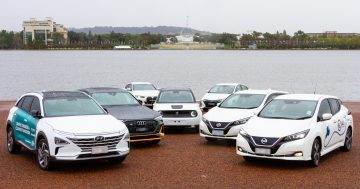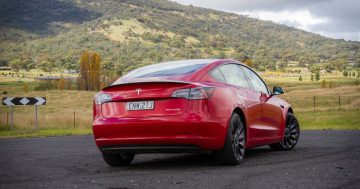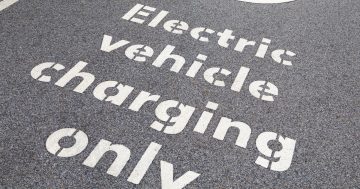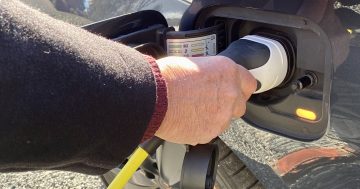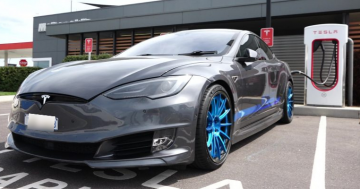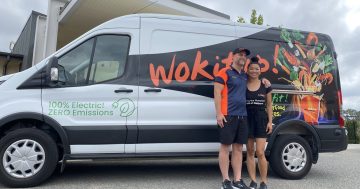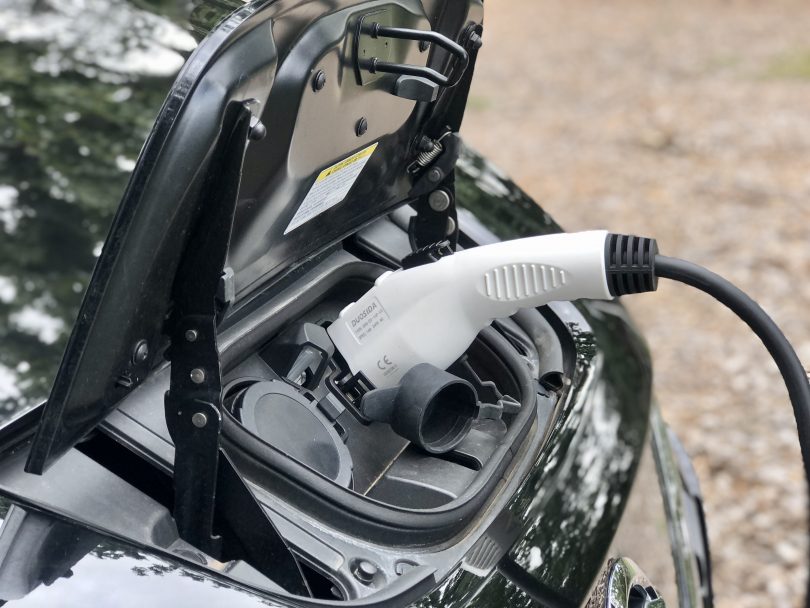
A different kind of filling up. Photo: James Coleman.
The ACT Government continues to rate highly for EV-friendly policies according to a report from the Electric Vehicle Council, while another report outlines options for governments to source revenue from road-user taxes instead of fuel levies.
Each year, the Electric Vehicle Council’s State of EVs report provides a snapshot into the electric vehicle industry in Australia while also ranking and scoring each state and territory on how they are encouraging the uptake of EVs.
According to the latest edition, the ACT scored eight out of 10, only bested by NSW at nine. The Federal Government received the lowest score of three.
The report states that the ACT has traditionally been a national leader in progressive EV policy and has continued to complement these efforts over the past 12 months. The main reason NSW pulled ahead was the launch of a new strategy to massively boost EV sales by 2030-31.
ACT Minister for Emissions Reduction Shane Rattenbury said that the current incentives available to EV buyers in the ACT has helped pave the road to an ‘EV revolution’ in Australia.
No stamp duty on EVs is complemented by two years’ free registration and a $15,000 interest-free loan. The ACT also continues to work towards a zero-emission bus fleet.
The ACT is home to 48 public charging stations and 10 fast-charging stations, with another 50 on the way.

Shane Rattenbury charging a Nissan Leaf at a public station in Civic. Photo: Supplied.
“We’ll also require EV charging in new multiunit and commercial buildings, and we’re investigating further incentives to support uptake by businesses and the community sector,” Mr Rattenbury said.
While proud of the work done so far, Mr Rattenbury added that there is much more to do before the ACT reaches the ambitious target of all new vehicle sales being zero-emission by 2030.
More broadly, the report reveals that so far in 2021, 8,688 EVs have been sold in Australia, making up 1.57 per cent of the light-vehicle fleet. This is already 2,000 more than were sold over the entirety of 2020.
However, this figure still leaves us well behind on the world stage. In Norway, the world’s leading EV adopter, 74 per cent of new light vehicles sold each year are EVs; in the UK, 10 per cent are EVs; in the US, 2.3 per cent are EVs.
The commitments to EVs keep coming from the car manufacturers themselves, with more and more setting dates for the demise of their fossil-fuel-powered range.
Australians now have access to 31 different EV models, with that number expected to rise to 58 by the end of 2022. Currently, 14 EV models are priced under $65,000.
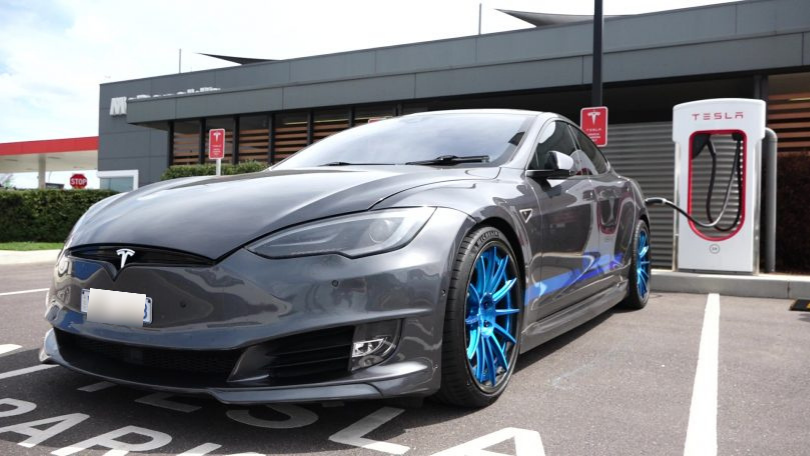
Tesla Model S charging at Majura Park. Photo James Coleman.
At this rate, Mr Rattenbury expects EVs to match the prices of petrol and diesel cars by around 2025, and that “measures that support the uptake of EVs will only accelerate this transition”.
But a rise in EVs means a drop in revenue from the fuel excise levy. Governments are already developing ways to make up for this loss of revenue with a road tax, on top of registration and tolls.
At this stage, the ACT Government has ruled out a road-user tax for EVs, but Mr Rattenbury declined to comment on whether or not they would ever disincentivise fossil-fuel-powered vehicles.
A new report by the Federal Government, however, provides a clearer picture of the future.
The 2021 Australian Infrastructure Plan suggests that a distance-based charge should apply to the use of all vehicles on Australian roads, starting with EVs before extending to all vehicles no matter the power source.
The justification is that heavy vehicles increase the cost of road maintenance by pounding over the pavement, while light vehicles contribute to emissions, crashes and congestion.
“The goal is that, ultimately, every vehicle owner and user will end up paying a fair price that reflects the impact of their choices,” the report explains.
The report states that this new road usage charge would be taxed at the same rate across Australia but could be supplemented by congestion taxes collected by state and territory governments.
Put together, the additional costs aim to push Australians into other “mobility choices”.












